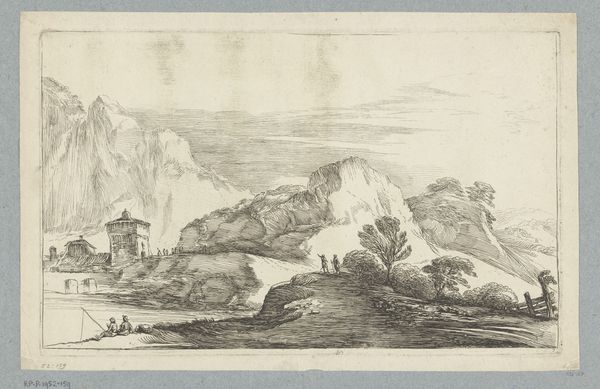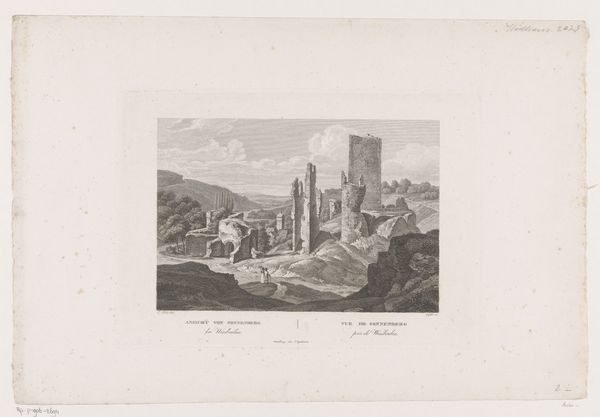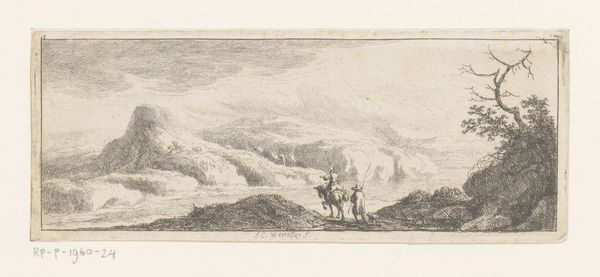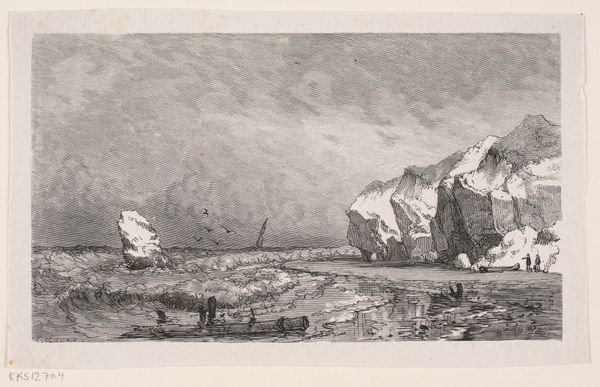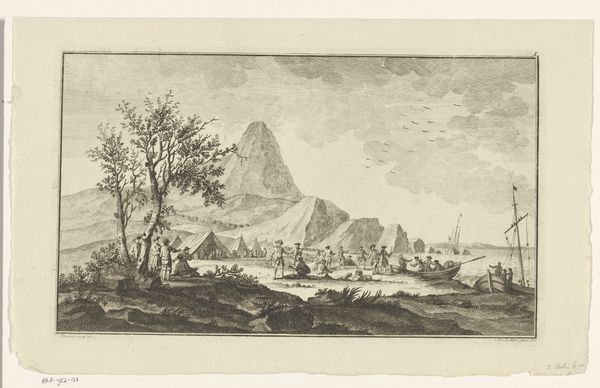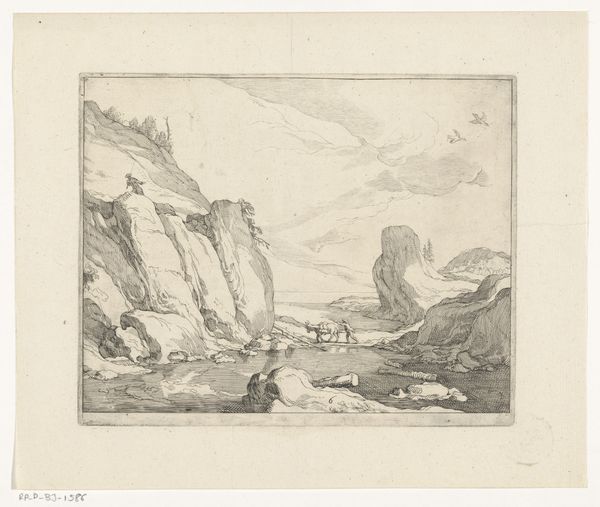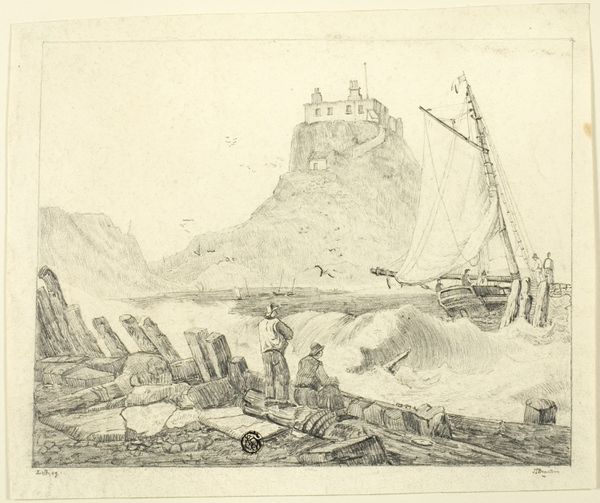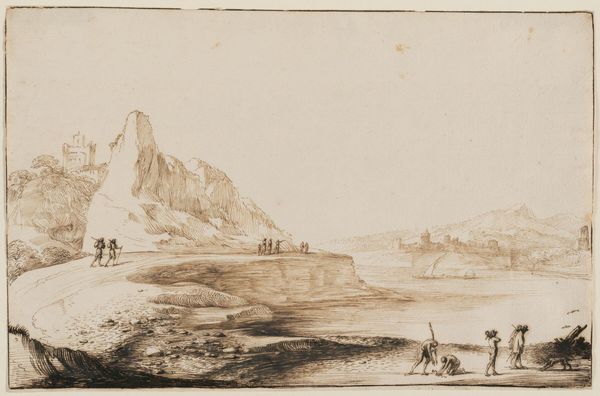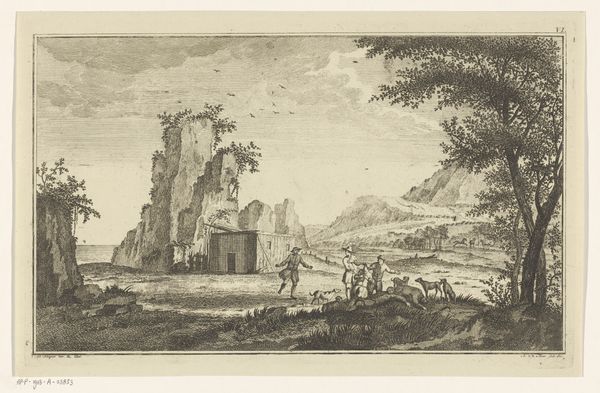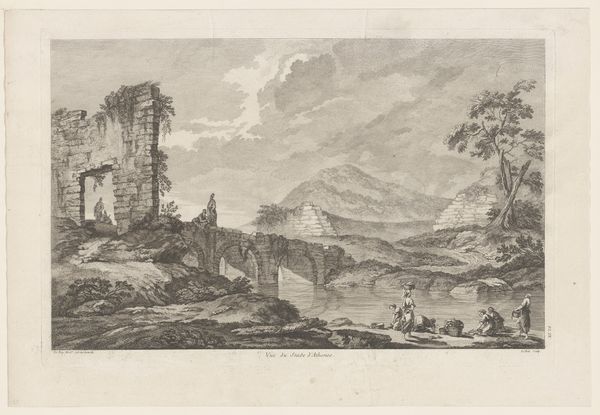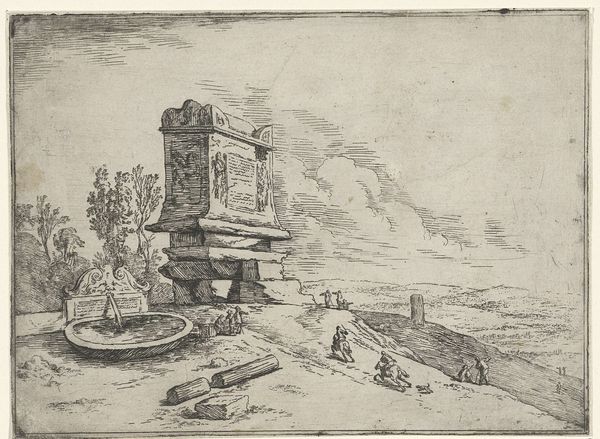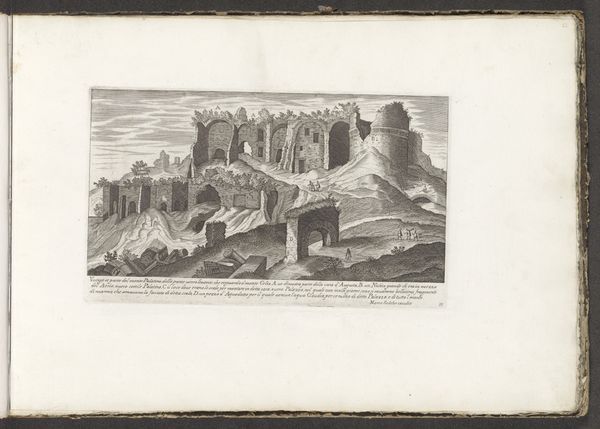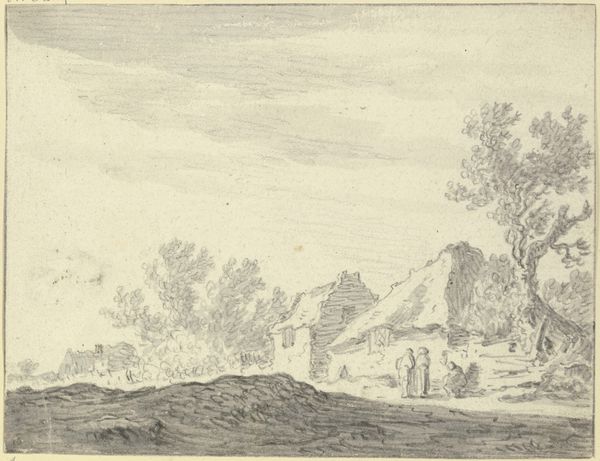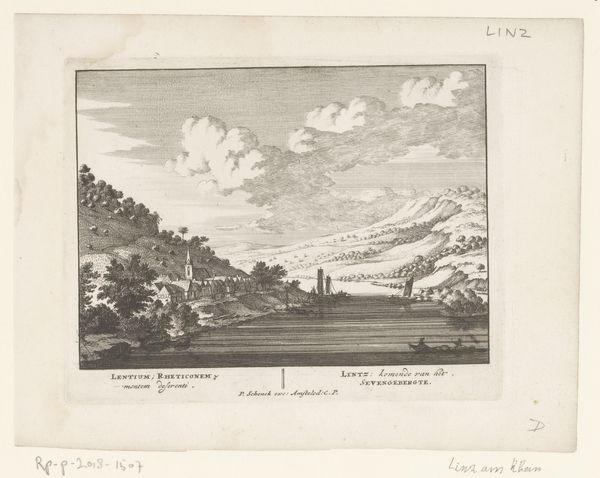
Gezicht op de ingestorte toren en herberg te Egmond aan Zee, 1741 1741 - 1743
0:00
0:00
print, engraving
#
baroque
#
dutch-golden-age
# print
#
old engraving style
#
landscape
#
cityscape
#
history-painting
#
engraving
Dimensions: height 129 mm, width 181 mm
Copyright: Rijks Museum: Open Domain
Curator: I'm struck by the starkness of this image, despite its small scale. There's something so bleak about it. Editor: Indeed. What we have here is an engraving, dating from around 1741 to 1743, by Hendrik Spilman. It’s called "View of the Collapsed Tower and Inn at Egmond aan Zee, 1741," and depicts precisely that: the ruins following a collapse. Curator: An inn as well? It looks like ordinary houses nestled amidst the sand dunes, giving the work an everyday quality at the margins, and a great church destroyed at the centre. Editor: Absolutely. Spilman's technique, of fine lines etched into a metal plate, heightens that sense of immediate, journalistic record-keeping. The engraving process allows for reproduction, transforming the catastrophe into a commodity viewed across Dutch society. Curator: And the choice to use engraving. Consider its labor; the artist must have intended this for wide dissemination, producing it not simply as a one-off expression. Was Spilman interested in how this disaster would circulate as information? What kinds of publics did he expect it to generate? Editor: A fair question. Prints like these played a key role in shaping public memory and opinion in the 18th century. Think about the audiences, perhaps seeing themselves as sympathetic bystanders to the collapse in this fishing village on the coast. The inscription explicitly identifies the place and the date: it memorializes an event, marking a spot for this community, creating both victim and witness simultaneously. Curator: Exactly, and the ruin is rendered with such precision that we feel its physical presence despite the fact that this is clearly meant as a piece of information first and foremost, aesthetic production second. Editor: The relatively unadorned rendering brings to mind similar documentary work intended for a broad, almost populist audience. The social function here is palpable, from its production in an artist’s workshop, to its life among the scattered audiences of the Dutch Republic. Curator: Right, so it is interesting to me how a natural disaster—a toppled tower—becomes intertwined with processes of creating images, which themselves can feel equally material and weighty in their social significance. Editor: So it's not merely an aesthetic statement, but an historical document of production. Curator: Precisely. Editor: Ultimately, this offers a stark window onto the way tragic events become mediated and consumed by society. The ruin becomes both evidence and artwork in a single impression.
Comments
No comments
Be the first to comment and join the conversation on the ultimate creative platform.
